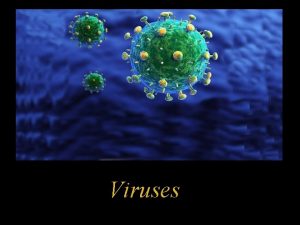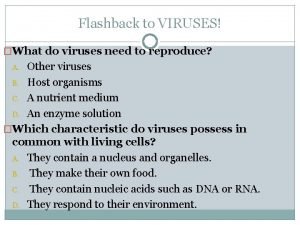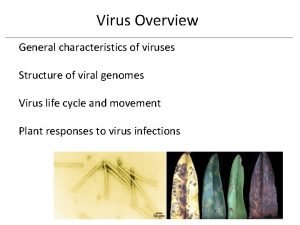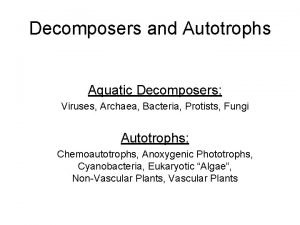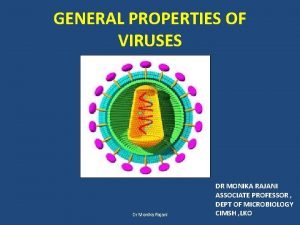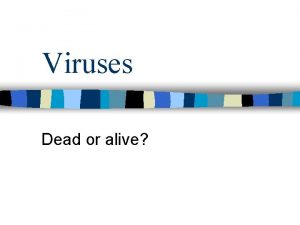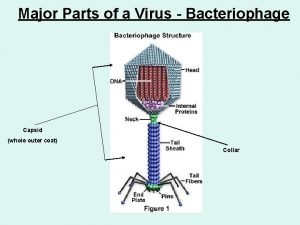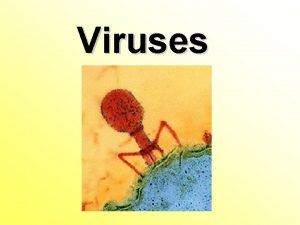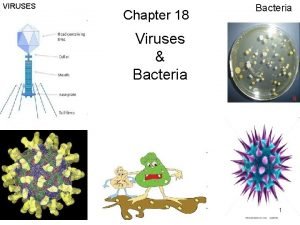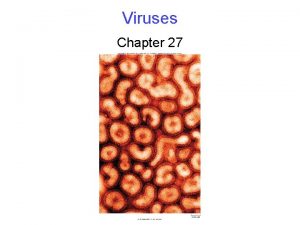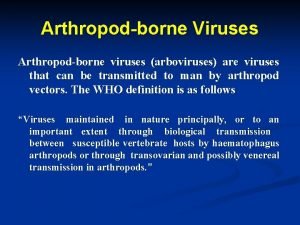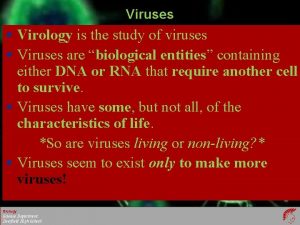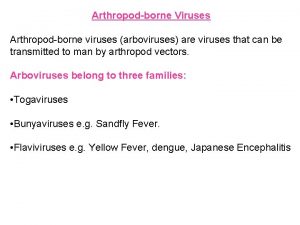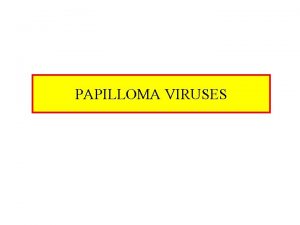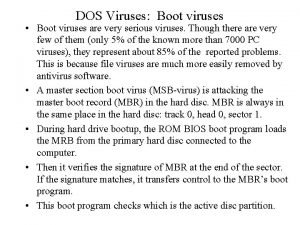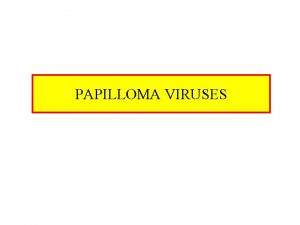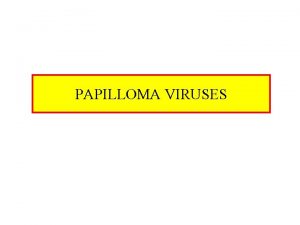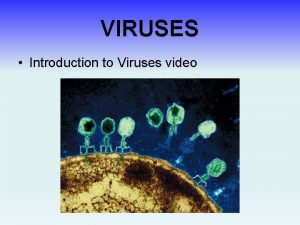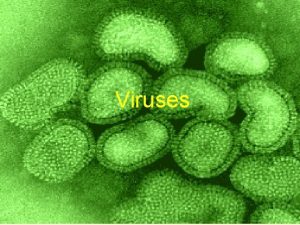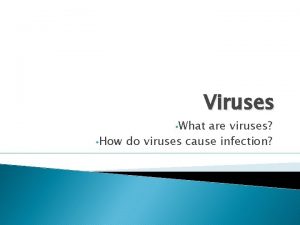VIRUSES 21 SEP 12 24 SEP 12 How























- Slides: 23

VIRUSES 21 SEP 12 24 SEP 12

How did scientists come up with the term VIRUS? In the 1890 s, two scientists independently investigate the cause of the disease.

How did scientists come up with the term VIRUS? The scientists extracted sap from unhealthy leaves and put it on the leaves of normal, healthy plants

How did scientists come up with the term VIRUS? They filtered the sap to remove bacteria and then repeated the tests.

How did scientists come up with the term VIRUS? Their conclusion was that something smaller than bacteria were causing the disease.

VIRUS Latin – Slime; poisonous liquid Modern – Agent that causes infectious disease

If viruses are smaller than bacteria, how big do you think they are? PREFIX yotta zetta exa peta tera giga mega kilo hecto deka deci centi milli micro nano pico femto atto zepto yocto SYMBOL Y Z E P T G M k h da d c m µ n p f a z y FACTOR 1024 1021 1018 1015 1012 109 106 103 102 101 10 -2 10 -3 10 -6 10 -9 10 -12 10 -15 10 -18 10 -21 10 -24

What are the main components of a virus? Capsid – Protein Shell Viruses are simple agents Nucleic Acid Core Envelope – Outer Membrane Surface Receptors

Capsids PROTEINS Proline, Threonine, Pro, P Thr, T Glutamic acid, Glu, E Isoleucine Asparagine, Asn, N Ile, I Amino Acids Serine, Ser, S

Helical Viruses Tobacco Mosaic Virus

Polyhedral Viruses Adenovirus

Complex Viruses T 4 Bacteriophages

T 4 Bacteriophage Head Tail sheath DNA Tobacco Mosaic Virus RNA Influenza Virus RNA Capsid Tail fiber Capsid proteins Surface proteins

Nucleic Acid Core DNA Deoxyribonucleic acid Adenine Guanine Thymine Cytosine

Nucleic Acid Core RNA Ribonucleic acid Adenine Guanine Uracil Cytosine

Nucleic Acid Core Viruses genomes can be either double stranded or single stranded.

Nucleic Acid Core Viruses can only have one type of nucleic acid. It must be DNA or RNA, not both!

Envelope Helps get the virus into the host cell.

Envelope Acquired from the host cell.

Envelope Is sensitive and can be disrupted by desiccation, heat, and exposure to detergents.

Receptors Help the virus recognize the host cell.

Receptors Are very specific – have a key and lock relationship.

Capsid Nucleic Acid Envelope Receptors Protein Shell DNA or RNA Membrane around virus Proteins that help virus get into proper host
 M7rh5si5154 -site:youtube.com
M7rh5si5154 -site:youtube.com Youtube
Youtube Hmadt
Hmadt Spherical virus
Spherical virus Lesson 1: viruses
Lesson 1: viruses Chapter 20 viruses and prokaryotes
Chapter 20 viruses and prokaryotes Lysogenic viruses do not
Lysogenic viruses do not Why are viruses considered nonliving
Why are viruses considered nonliving How active viruses multiply
How active viruses multiply Plant viruses
Plant viruses Best viruses
Best viruses Egrette - chapter 21
Egrette - chapter 21 How do viruses differ from living things
How do viruses differ from living things Bacteriophage characteristics
Bacteriophage characteristics Hepatotropic viruses
Hepatotropic viruses Are viruses decomposers
Are viruses decomposers Basic properties of viruses
Basic properties of viruses Are viruses alive yes or no
Are viruses alive yes or no Are viruses dead or alive
Are viruses dead or alive Section 19-3 diseases caused by bacteria and viruses
Section 19-3 diseases caused by bacteria and viruses Virus taxonomy
Virus taxonomy General characters of viruses
General characters of viruses Parts of a virus
Parts of a virus Importance of viruses
Importance of viruses



